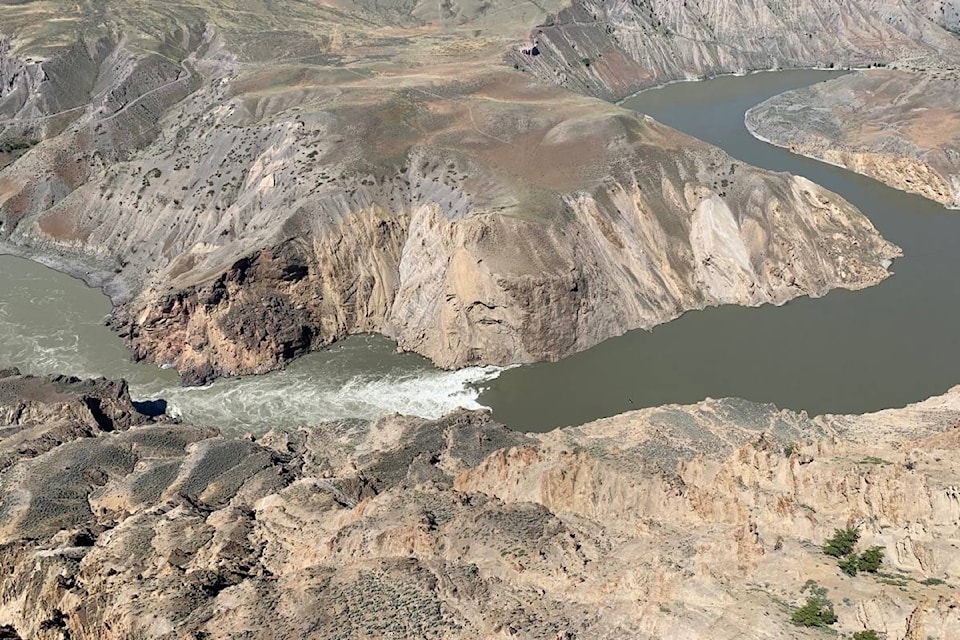Prime Minister Justin Trudeau and B.C. Premier John Horgan have confirmed their joint determination to do everything possible to ensure that millions of Fraser River chinook, steelhead, coho, and sockeye are able to navigate past the Big Bar landslide to their spawning grounds.
The slide—which has been described as significant—was discovered in late June, 2019 in a narrow portion of the Fraser River near Big Bar, just north of Lillooet. Data gathered after an examination of satellite imagery indicates that the slide may have occurred in late October or early November of 2018.
The slide occurred in a remote and unstable portion of the river with steep canyon slopes and turbulent, swift-moving water. The site is not accessible by existing public roads, and there are many challenges that make remediation work difficult, including rapid water flow conditions, lake of accessibility, unstable water levels, heavy river debris and silt, and the safety of personnel carrying out work at the site.
Acoustic monitoring equipment is being used to determine if fish are able to get past the site, and if so, how many and what kind. A number of options are being considered to assist spawning fish to get through the slide site, including establishing a natural fish passage; installing a prefabricated temporary fishway, structure, or a combination of the two; physically moving fish above the slide site by trapping them and then transporting them via truck or helicopter; or installing a pneumatic fish transportation system. The Whooshh fish transportation system moves fish through two flexible pressurized tubes from below an obstruction to above it.
The federal-provincial commitment to action regarding the Big Bar slide came during a brief meeting in Victoria on July 18, at which Horgan updated the Prime Minister on the collaboration to date to overcome the landslide.
“Although the challenges ahead are significant, I want to express my sincere thanks to all those working hard to protect the millions of salmon that will soon be arriving to their spawning grounds,” says Doug Donaldson, B.C.’s Minister of Forests, Lands, Natural Resource Operations and Rural Development. “Premier John Horgan discussed the severity of this issue directly with the Prime Minister, and I’m proud to say that with support from First Nations, the team has developed a multi-pronged plan to address the changing river conditions and the risk to the salmon.”
Over the past weeks, experts from the three levels of government have worked to develop a series of parallel responses to the slide that will allow them to respond to the rapidly changing conditions on the river. Crews have been dropping some rock and scale into the area, and will soon begin manipulating larger rocks to improve the passage of fish. Scaling crews are working to remove dangerous rocks on the face of the landslide to provide safe working conditions and to avoid another landslide happening in the future.
“Our government, alongside the Government of B.C. and First Nations communities, is working around the clock to ensure we do everything possible to see the fish pass safely in the Fraser River,” says Jonathan Wilkinson, federal Minister of Fisheries, Oceans and the Canadian Coast Guard.
“DFO officials and members of the Canadian Coast Guard have been on the ground since day 1 and have been working with local partners to reach a solution.
“Collaborative efforts like this one are crucial and will give the best chance of survival to these stocks.”
To stay up-to-date about the Big Bar landslide, go to http://bit.ly/30KHuzs.
editorial@accjournal.ca
Like us on Facebook and follow us on Twitter
